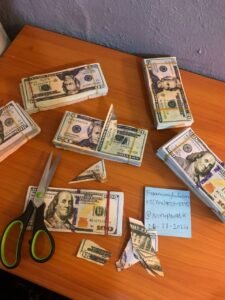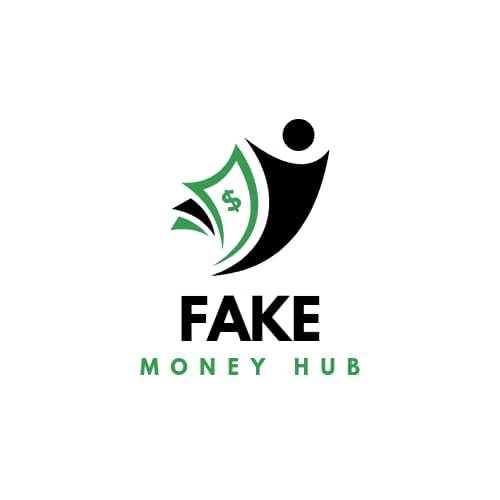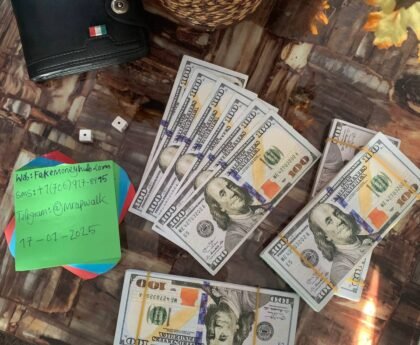Buy Counterfeit Money | Buy Fake Counterfeit Money
A passage through time, Buy Undetectable Counterfeit Money been around almost as long as money, and its Detection has been a constant battle between forgers and control. From the foreword days of coin-based economies to today’s digitally secured banknotes, the methods used to evaluate and detect spurious currency have advanced exceptionally.
In this blog, we will journey via the history of Counterfeit Money To Buy, examining how capabilities have evolved to keep one step ahead of counterfeiters.

1. Ancient Times; The origination of simulated Detection
In the forward days of currency, when coins made of valuable metals like silver, gold, and copper were widely used, reproduction often involved creating reproduction with less valuable metals or reducing the weight of genuine coins. This era’s Where To Buy Counterfeit Money, relied largely on a keen eye and a sharp ear.
Material Comparison: Merchants and officials often detect counterfeits by weighing coins. Genuine coins made from specific metals had predictable weights, so lighter counterfeits could be quickly identified comparably. Coins made from impure metals would sound different when they come upon.
Optical Inspection: Skilled artisans were tasked with examining coins for discrepancies in impression, detail, or finish. They knew the authentic designs well and could spot subtle differences in imitations.
Simple Tests: Scratch tests and tools like touchstones (used to test metals by marking them against specific surfaces) were commonly used to check for authenticity in coins, principally gold.
2. The arrival of Paper Money; 18th and 19th Century reorganization
The introduction of paper money is primarily gold. The 17th century was a main leap forward, but it faced new challenges. Early banknotes were uncomplicated to spurious due to the lack of complicated designs or materials. In response, governments and banks began developing creative solutions.
Serial Numbers: By publishing an individually unique serial number on each note of money, the administration developed a way to track currency and identify duplicates, a key indicator of Where Can You Buy Counterfeit Money
Watermarks and Paper Quality: As counterfeiting increased, authorities began embedding watermarks in paper money, a practice that’s nationally used today. As counterfeiting grew, authorities responded by implanting watermarks into paper currency—a measure still widely used today. They also composed the paper from high-quality linen or cotton , often adding unique fibers or textures that made it especially challenging for forgers to imitate.
3. The 20th Century; High-Tech Printing and Specialized Inks
With the arrival of advanced printing technology in the 20th century, anti-counterfeiting actions took a huge action. Governments started using innovative techniques and materials that made currency much harder to copy.
Intaglio Printing: In this method, ink is impressed deeply into the banknote paper, creating a raised texture on the surface. People could quickly check if a bill was authentic by feeling these raised textures. Intaglio printing remains a key security feature, making it difficult for cheaters to copy accurately.
Colour Changing Inks & Security Threads: Color-shifting inks were introduced in the late 20th century, changing colours from different angles. These special inks, alongside insert metallic security themes, added a visual security side that was easily recognizable and hard to reproduce.
4.The 21st Century; Digital spotting and Polymer Banknotes
Today, anti-counterfeiting measures combine both physical and digital performance to create banknotes that are nearly impossible to replicate perfectly. Technologies like UV-responsive inks, micro printing, and polymer have brought modern banknotes to a new level of security.
UV and Infrared Inks: Many modern banknotes have invisible articles that appear only under ultraviolet radiation or infrared light. Patterns, images, and serial numbers become visible under specific conditions, making it nearly impossible for forgers to create specific replicas.
Polymer Banknotes; Polymer notes, first evolved by Australia in the 1980s, are now used by countries like Canada and the UK. These plastic-based banknotes are not only more durable but can also include features like clear windows, intricate holograms, and raised textures, all of which are very hard to substitute
Microprinting and nanotechnology: Tiny text and images, visible only under exaggeration, are included in many banknotes today. This is completed with Nanoengineering for even finer details, ensuring that even if a note looks right to the naked eye, it will fail closer exploration.
RFID Chips and QR Codes; while still experimental, some countries have begun exploring the use of digital technologies, such as overview RFID chips and QR codes, which would allow banknotes to be certified instantly using a smartphone or special device.
5. Modern Tools and Public Awareness; Fighting Imitation in the Digital Age
In addition to improved banknote designs, developments in detection technology have helped institutions and the general public identify simulated bills with greater ease and authority.
Currency Authentication Devices: Banks and businesses are increasingly relying on high-tech devices to detect counterfeit cash. These refined machines can swiftly check for details like UV-reactive inks, paper thickness and magnetic properties, making it much easier to spot fake bills. For retailers, this means they can verify money on the spot, quickly and reliably, helping them steer clear of the risk of accepting counterfeit currency.
Mobile Apps and Public Education: Governments and central banks actively educate the public on identifying counterfeit money. Apps now allow users to verify banknotes by comparing their features to official standards, and public awareness campaigns teach people what to look for in genuine currency.
Buy Undetectable Counterfeit Money | Buy Best Counterfeit Money
Strategies for How to Prevent Counterfeit Money
If money is fake, how can you tell? The following strategies and tips will help you to identify Buy Counterfeit Money Online during any transaction. You can easily follow these cash-handling security best practices and complete them quickly during cash exchanges.
Check the Feel of the Paper
The composition of real money is different because it has special paper printed on it. When you have an authentic banknote, feel the bill and note the difference in texture compared to Where Can I Buy Counterfeit Money
. While this may seem subtle, the more cash you handle, the easier it is to tell the difference.
Examine Borders and Printing
Another tip is to inspect the edges and borders of bills. How do you know if a bill is Counterfeit Money Buy
? Counterfeit money often has uneven or faded printing. A counterfeit U.S bill can also appear crooked. Legitimate currency, on the other hand, will have crisp, well-defined edges.
Look For Red and Blue Threads
Original US bills have red and blue threads added to the paper. You will know a bill is fake when the threads are printed or missing instead. Thus, looking for the right color threads is a quick authenticity check to distinguish Buy Undetectable Counterfeit Money Online from real money.
Inspect Serial Numbers
When learning to Buy Best Counterfeit Money, you should also pay attention to the serial numbers on the bills. Counterfeiters can reuse the serial number. So, seeing multiple bills that are the same could indicate that they are fake. Also, the serial numbers on a bill should match exactly. So, if you notice a bill with serial numbers that don’t line up, that’s a strong sign it could be counterfeit.
Check for Security Threads
When you are learning how to spot counterfeit money, finding the security thread and ensuring it’s in the right place is extremely important.When you hold the bill up to the light, you should see this detail. If it appears on the wrong side of the face for that denomination, it’s probably a fake.
Conclusion
Over the centuries, the fight against counterfeit money has driven some incredible innovations. From analyzing metals and adding watermarks to using polymer notes and even smartphone apps, each step has made our currency more secure, protecting both our economies and public trust. As technology continues to evolve, tomorrow’s banknotes will likely come with even smarter features, making counterfeiting an ever-riskier game for those who try.

